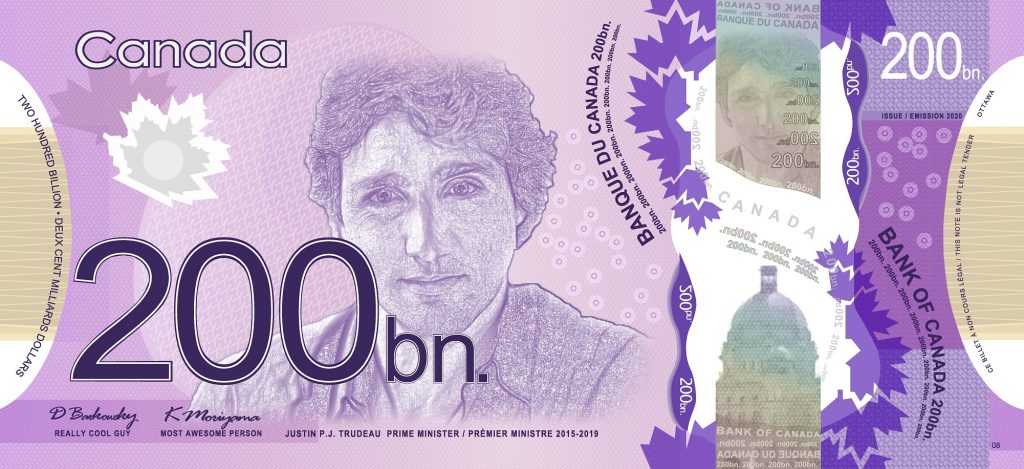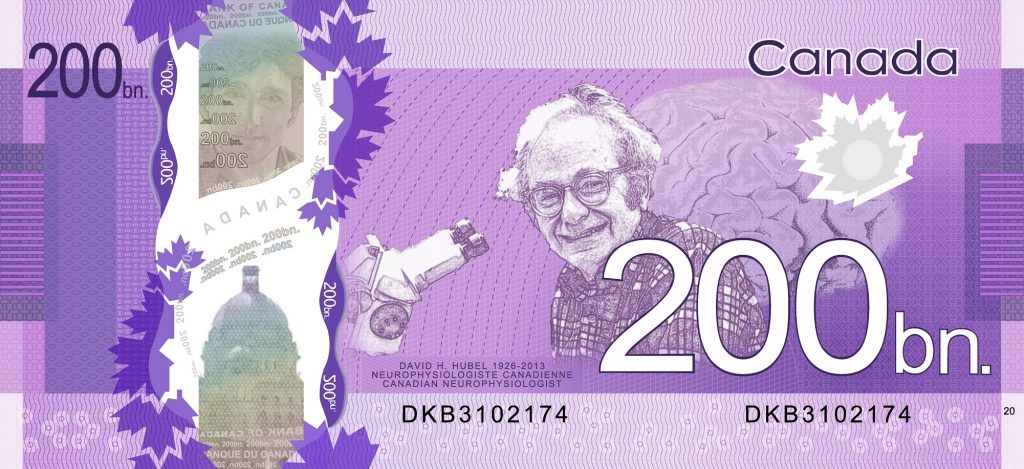$2 Billion Dollar Bill
2021-10-01
Way back in 2013...
My wife and I started a habit long ago where we would bet on little things:
- Does our battery charger take AAA batteries?
- Did Thorin die in the Hobbit?
- Are eggs considered dairy?
These examples are all true bets we made, and I lost every one.
Fortunately, we don't bet with real money. A made up number is thrown out at the bet. Throw out a higher number to try and bluff your way out, but know that any wins and losses are recorded. This adds up, and at a time when I was more willing to bet no-mater-what, I found myself in large amount of imaginary debt.
$2 billion dollars to be exact.
I set out to make the non-existent: a $2 billion dollar bill to pay off my imaginary debt. I'm a sucker for free, open-source software, so I booted up Inkscape and found a high-res version of our recent plastic CAD bills for reference. The goal was to recreate everything as a vectorgraph image. If I could avoid rasterization, I would.
The Process
The process was pretty straightforward: control my layers carefully and continue to draw out the shapes with the bezier curve tool. In some ways, this was also going to be a surprise for my wife, so I settled on a shade of purple for the colour (her favourite), choose a Nobel-prize-winning Canadian neurobiologist (her field) for the front, and picked Justin Trudeau for the back. In a way, I guessed his election win two years beforehand, which is pretty neat.
The images of people is where I wasn't very happy with the vectorgraph approach. Instead, I used GIMP to adjust the images and apply filters until they looked sufficiently stylized. The biggest challenges came from accurately placing texted on curved paths —Inkscape isn't great at this— and getting a detailed looking background that hopefully resembled the security features we actually find on our plastic bills.
The only thing that I couldn't accomplish was to actually print them with the plastic transparency and shine that the maple leaves produced. Maybe this was a good thing, as a local printing company actually printed off the final result for me. I was a little concerned about his, and so was the business staff. If I had tried to make a $100 bill instead, probably they would have said no.
Reflection
While Inkscape isn't always the most user-friendly program. It did the job here. The most frustration came from Inkscape's inability to process the insane number of paths that I had created. Every movement or addition resulted in substantial lag. I still jump to use it whenever I need to make posters or icons, however, as it's easy to keep on a flash drive when you need it in a pinch and the scalability of SVG files is unmatched.
See my final result below:

